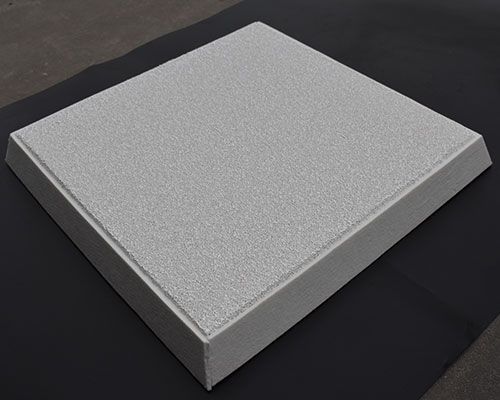The degassing and filtration composite purification method is a mature composite purification technology with the dual functions of degassing and impurity removal. It has been widely used in major aluminum and aluminum alloy manufacturers in the world.
Currently, degassing and filtration composite purification devices are commonly used in online continuous purification. Commonly used combination methods are generally two-stage degassing and multi-stage gradient filtration. In terms of degassing, it is mainly the blowing method, in which the porous head blowing and the rotating blowing are the main parts. The filtration technology is mainly based on flux filtration and gradient filtration of filters of different materials.
The filter generally adopts foam ceramic filter. Purifying molten aluminum outside the furnace through ceramic foam filter plates is an effective way to improve the cleanliness of molten aluminum. The ceramic filtering process can effectively remove various inclusions in the molten aluminum with a fineness of micrometers, reduce the influence of inclusions on the quality of the cast-rolled billet, and provide a basic guarantee for obtaining high-quality cast-rolled billets.

Rotating spray rotors are often used in degassing devices. Because the rotating rotor can make the bubble diameter very small, the bubble’s tumbling effect on the liquid surface becomes very small, so that the air flow can be relatively increased. To obtain high degassing efficiency, a certain air flow must be guaranteed.
Due to the stirring effect of the rotating nozzle inside the molten aluminum, the molten aluminum is in a state of motion, which strengthens the renewal of the gas-liquid interface and is beneficial to improve the mass transfer capacity of the molten aluminum. Due to the non-straight upward movement of the bubbles in the molten aluminum, the residence time of the bubbles in the molten aluminum is relatively long, so that the role of the bubbles in the dehydrogenation can be fully exerted. The bubbles are uniformly distributed in the molten aluminum, which can reduce the diffusion distance of the hydrogen atoms in the molten aluminum to the bubbles, so that the diffusion process in the entire molten pool can be strengthened. The rotating nozzle method can give full play to the advantages of the bubble floatation method for hydrogen removal. The key is that the liquid forms a turbulent flow under the strong action of the nozzle, and the bubbles are broken and uniformly dispersed under the action of the nozzle and the turbulent flow.

